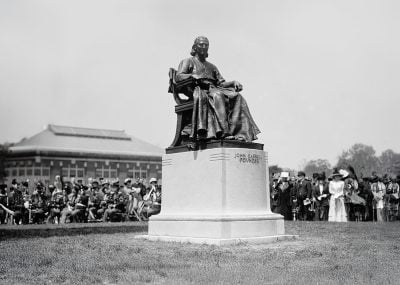Brett Kebble epitomised post-apartheid South Africa’s new breed of entrepreneur. A white mining magnate, he was politically well connected and with his BEE partners was staking and making fortunes investing in the booming extractive industries sector. On the face of it he had everything – the young family, three luxury homes, two private jets, a fleet of expensive cars and a bon vivant’s lifestyle.
Then, in September 2005, Kebble was found dead – slumped at the wheel of one of his cars on a quiet Johannesburg street. He had been shot a number of times at close quarters. The immediate assumption was he was the unwitting victim of a car jacking or hold-up that had gone disastrously, and bloodily, wrong. But it did not take long for real doubts to be raised, and consequent investigations revealed a far more complex picture of the circumstances of Kebble’s death.
This is the story that Mandy Wiener, the award-winning journalist with South Africa’s broadcaster, Eyewitness News, relates. It is a story that, in Wiener’s own words, “blew the lid off Johannesburg’s underworld”. The story alleges that Kebble and his associates were certainly mixed up in a murky world of corruption, influence pedalling, kickbacks, political machinations and, quite possibly, organised crime. Brett Kebble arrived on the South African mining scene in 1991, according to Wiener. As she explains it, his father Roger – a retired mining engineer – had pumped his cash into a 65-year-old embattled mine called Rand Leases.
Kebble junior joined his father in this enterprise and quickly persuaded a London fund manager to back a hostile takeover of another miner, Randgold – quite an achievement for a man who knew little about the industry and had little or no collateral other than the family’s Rand Leases shareholding.
This was just the first of a number of business manoeuvres that led Brett to be known as “deal-a-day Kebble”, as he amassed a huge portfolio of mines. And Wiener never quite explains where his apparent great wealth originated.
Brett Kebble’s first major deal was the disastrous purchase of Anglo American’s near 35% stake in Johannesburg Consolidated Industries (JCI) with ANC figure Mzi Khumalo in a complex cross-shareholding arrangement. It was a putative ‘black empowerment’ deal, but when the gold price collapsed in 1994 that did not save the partnership and Kebble pushed Khumalo out of the company.
Building an empire
Bouncing back from the JCI imbroglio, Kebble began to build his empire, presumably leveraging the assets of one deal to finance the next, and all the while schmoozing the press with his plans to fundamentally change the face of South Africa’s mining industry.
However, “the mining industry is the riskiest industry you can be involved in”, Wiener quotes David McKay, the editor of MiningMx, as saying. McKay explains: “Your assets are always depleting as soon as you buy them. There’s huge pressure to reinvent yourself all the time, often through merger and acquisition activity, hence all these deals going on. There’s always long lead-in times for your projects. The budgets are always huge. So the risk element of the industry is massive.”
And when you add in the political dimension, you have a hugely complex and dangerous scenario. Kebble was thought to be bankrolling the ousted former deputy president, Jacob Zuma, in his power struggle with then President Thabo Mbeki.
Yet Wiener points out that the political situation was, in fact, not that clear cut. Perhaps Kebble was hedging his bets, but he was also known to have befriended Essop Pahad, Mbeki’s lieutenant-in-chief and was close to Jackie Selebi, the country’s police chief and Interpol chief – later to be jailed for allegedly taking money from Kebble. At the time, Selebi was widely seen as being loyal to Mbeki. Wiener comments: “Brett’s backing of a particular faction within the ruling [ANC] party, when the organisation was consumed by a bitter power struggle, had made him a target.”
Certainly, Kebble believed he was targeted by the country’s former prosecution boss, Bulelani Ngcuka. He accused Ngcuka, along with Justice Minister Penuell Maduna, of pursuing a private agenda against him. At the time, in 2003, Kebble and his father were facing fraud charges – and Jacob Zuma’s allies were accusing Ngcuka of being an apartheid-era spy even as the National Prosecuting Authority was conducting corruption investigations against Zuma.
There are many peripheral figures in this story, such as the mysterious John Stratton who worked with Kebble but had a background in national security, thought to have once been an intelligence officer and who may or may not have had a more central role than the evidence suggests; Mark Wellesey-Wood; Stephen Mildenhall, a forensic auditor who was probing JCI before he was shot three times outside his home in what might have been a fumbled assassination attempt; and Clinton Nassif, a security specialist who, it was alleged, acted as a contact between Glenn Agliotti and other ‘security specialists’ (working mainly as nightclub bouncers) who constituted muscle and guns for hire.
Five central figures
But five figures are central to the story – including the aforementioned Jackie Selebi. They are Glenn Agliotti, a wannabe Mafia don, and a trio of young men – Mikey Schultz, Faizel ‘Kappie’ Smith and Nigel McGurk. Agliotti was a friend of Kebble’s and through him met Selebi. A larger-than-life character who fashioned his image on a typical American Mafia ‘wise guy’, Agliotti was to be charged with the murder of Kebble, a charge that he refused to admit and of which he was eventually cleared.
It was Clinton Nassif who led the police to Schultz, Smith and McGurk. Arrested on an insurance fraud charge, he agreed to tell the prosecution authorities all and testify in court about the Kebble murder as well as details of Agliotti’s relationship with police chief Selebi. In return, he would be given blanket indemnity for the crimes that he had committed.
When Schultz, Smith and McGurk were arrested, they were controversially offered a similar deal – tell all, testify and get indemnity (the South African term for immunity from prosecution). The Scorpions, the former special police unit probing Kebble’s death, were clearly after Agliotti and/or Selebi, and didn’t mind letting killers walk free as long as they got who they considered were the kingpins.
According to the three arrested men, they had liaised with Nassif on behalf of Agliotti, had been promised payment of R500,000 each (more than $70,000), and had agreed to kill Kebble – as he had wanted an assisted ‘suicide’ to look like a crime, to benefit from huge life insurance policies that he had taken out to benefit his wife and family.
Certainly, there is a lot of circumstantial evidence that Kebble had sought an assisted suicide to escape the gathering financial storm that was threatening his business reputation, and his behaviour in the days prior to his death, according to his manservant Andrew Minnaar, was odd. Not only had Minnaar been tasked with burning papers on the living room fire, but Kebble’s habits changed – he was drinking even more heavily than usual, receiving fewer guests and had begun driving himself and giving his driver nights off.
But do these factors prove that Kebble had sought an assisted suicide? His father and brother do not believe it was in his nature to have done so.
But Wiener interviewed Schultz, Smith and McGurk, who walked free, and they are adamant that he wanted to be killed.
Yet there remains the possibility that Kebble was hoodwinked by his friends and colleagues into meeting his killers on that September night, perhaps to stage a fake kidnapping and disappearance.
This book is a formidable piece of research that includes selected court transcripts. But it might have benefited from a more structured approach, and Wiener could also have offered more in the way of a closure to this whole sordid affair. But her particular journalistic background, rolling news, rarely offers conclusions.
Want to continue reading? Subscribe today.
You've read all your free articles for this month! Subscribe now to enjoy full access to our content.
Digital Monthly
£8.00 / month
Receive full unlimited access to our articles, opinions, podcasts and more.
Digital Yearly
£70.00 / year
Our best value offer - save £26 and gain access to all of our digital content for an entire year!
 Sign in with Google
Sign in with Google 


